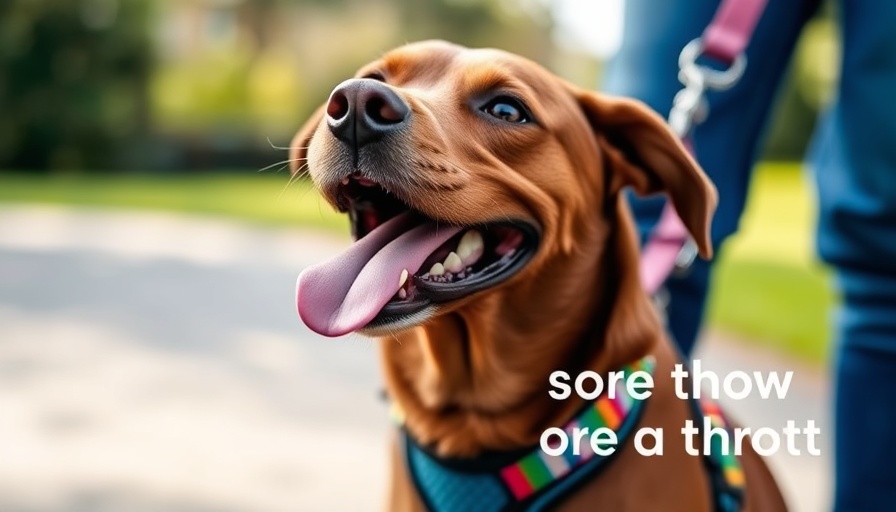
Understanding Your Dog's Sore Throat
Just like humans, our beloved canine companions are not immune to the discomfort of a sore throat. When your dog shows signs of discomfort while swallowing or encourages a persistent cough, it can be concerning. These issues can stem from various causes, including breathing in irritants or infections that lead to mild ailments like kennel cough or tonsillitis. While it’s always essential to consult with a veterinarian to diagnose underlying conditions, many pet owners can find relief for their furry friends at home through simple yet effective remedies.
Common Causes of Sore Throat in Dogs
Understanding the underlying causes of your dog’s sore throat is key to finding the right remedy. From tonsillitis—inflammation of the tonsils often caused by bacterial or viral infections—to issues such as strep throat and kennel cough, the symptoms can vary widely. Dogs can cough, drool excessively, refuse food, or exhibit signs of discomfort when swallowing.
Respiratory infections can also be contributory, leading to coughing and a general decline in energy. Another possible cause includes the accidental swallowing of abrasive objects, which can injure the throat's lining and cause excessive pain. Moreover, collar irritation can become another hidden menace, especially for excited dogs who tend to pull on their leash.
Experimenting with Home Remedies
With veterinary consultation in mind, there are several soothing home remedies pet owners can try to relieve their dog's sore throat. Here are some effective options:
- Warm Water with Honey: A soothing blend of warm water and a touch of honey can provide relief for your dog's throat, as honey offers anti-inflammatory properties and also enhances palatability.
- Humidifier: Adding moisture to the air can help alleviate a dry throat. Run a humidifier in the room where your dog rests to ease discomfort.
- Soft Foods: Encourage your dog to eat soft, mushy food, such as canned dog food or boiled chicken. This prevents irritation from hard kibble while still providing vital nutrients.
- Ice chips: Offering your dog some ice chips can not only numb the throat but can also stimulate swallowing.
- Herbal Teas: Some herbal blends may provide a soothing effect. Make sure to choose pet-safe options and consult your vet for approval.
Beyond Home Remedies: When to Seek Professional Help
While home remedies can be effective, it’s crucial to recognize when your dog might need professional attention. If your dog shows persistent symptoms like a high fever, significant lethargy, or refuses to eat for more than 24 hours, these could be signs of a more serious health issue. Always stay vigilant and proactive about your dog’s health to ensure they recover swiftly.
Creating a Comfortable Environment
Complementing the remedies, creating a relaxing space for your dog can facilitate their recovery. Keep their area clean and calm, ensuring they can rest without disturbances. Regularly check their collar or harness to avoid any discomfort that could exacerbate their sore throat symptoms.
Building a Healthier Lifestyle
To minimize the occurrences of throat-related issues, consider adopting preventive measures. Regular visits to the vet for health checks, maintaining regular vaccinations, and ensuring a balanced diet contribute to your dog’s overall well-being and vitality.
Conclusion
As loving pet owners, finding ways to soothe our dogs when they experience discomfort is incredibly important. By understanding the causes, implementing home remedies responsibly, and recognizing when it’s time to seek professional help, we can take significant steps towards ensuring a happy and healthy life for our furry companions. What’s essential is keeping a watchful eye and being proactive in their care!
For more pet care tips and insights, continue to stay informed and engaged in ensuring your dog's well-being, keeping the joy in their lives as vibrant as the love they share with you.
 Add Row
Add Row  Add
Add 




Write A Comment